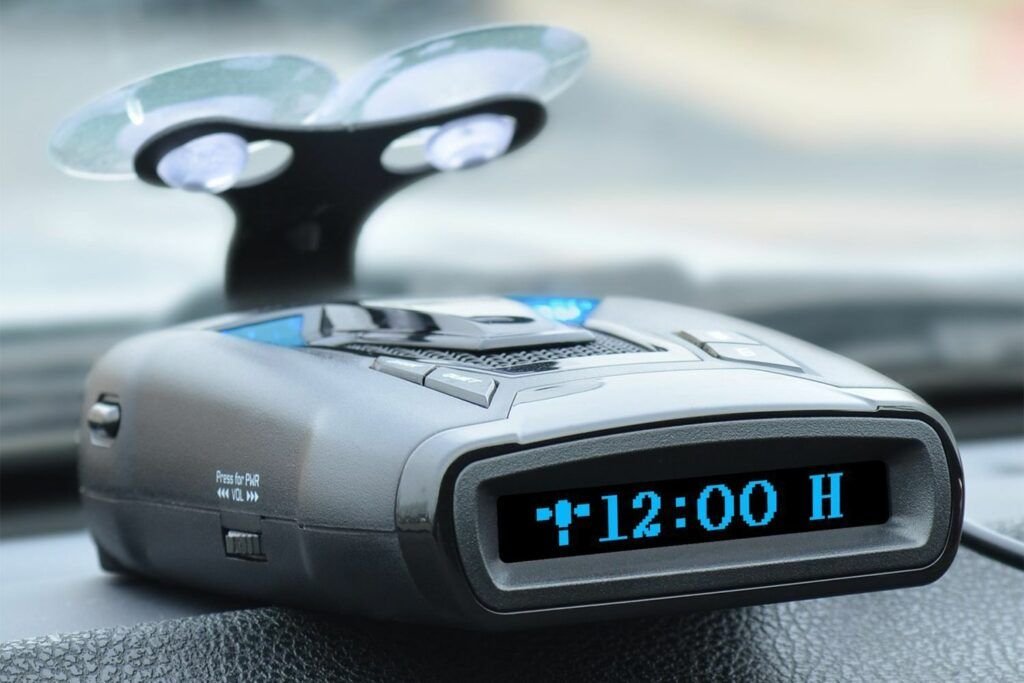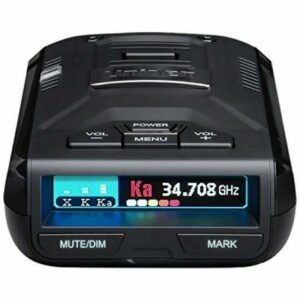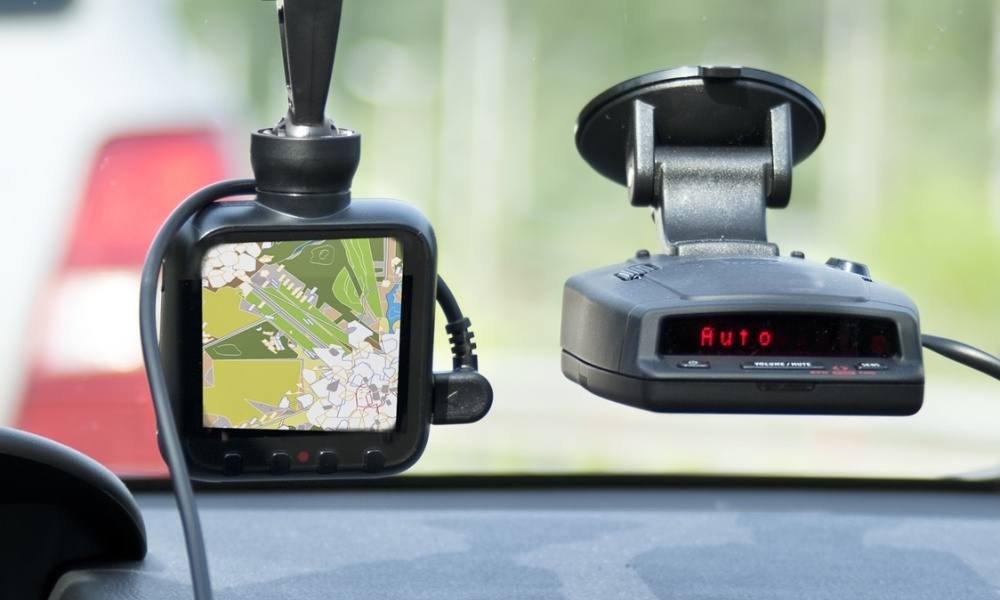The consequences of driving over the speed limit can be severe, depending on your state and speed. But what if you could detect the radio waves of police speed detectors before entering their range. This could save you from the embarrassment of getting arrested or ticketed. A car radar detector alerts the over speeding driver on time, providing enough time to slow down. What is a car radar detector and useful can it be to you?
A car radar detector is a device that receives signals from nearby speed detectors and alerts the driver to reduce his/her speed if driving over the speed limit. A car radar detector also ensures safe driving while keeping car owners out of the net of law enforcement.
Car owners are choosing car radar detectors for several reasons, including their ability to catch some of the most hidden police radar waves. How do you choose the best car radar detector, and how does it work?
Table of Contents
How Does A Car Radar Detector Work
The car radar detector is equipped with several important components, including a wave guide and advanced technology such as a Low Noise Amplifier (LNA).
A car radar detector works by tuning into nearby police detector frequencies and then using its wave guide to receive signals, before amplifying it with a low noise amplifier.
Some of the police frequencies in the United States are Ka-band, X band, and K band. Most car radar detectors are programmed to comb these frequencies, which enables them to receive signals in a split second. It alerts you quickly before your speed is picked up by a police radar gun.
However, a couple of cars radar detectors can be tricked into sending out false alarms. While it is mounted or installed to capture police radars, other signals may interfere, which is heightened in busy traffic.
Some advanced radar detectors have waveguides that can ignore interference and amplify only the right signals. Some radar detectors also feature a GPS that helps to store data and information that could help improve the detection of police radars.
It works by mapping out areas with police detector presence or with false alarm triggers and notifying you accordingly in the future. You also map out any of these areas manually in older radar detectors.
While car radar detectors are efficient at picking up signals, some are blind to other devices. Most of them lack the components to capture advanced devices which cause ineffectiveness and may leave you exposed. However, some GPS-equipped detectors are also able to catch speed monitoring cameras.
The car radar detector is a useful device for motorists and car owners, however, its constant use has been an issue for the police, which has led to new radar frequencies, alien to older car detectors. This is why overspeeding drivers are sometimes surprised by lurking police officers.
Types of Radar Detectors
There are essentially two types of car radar detectors. Although different, these radars both function the same way to achieve the same result of alerting you to the presence of speed detecting guns.
The custom/remote radar detector provides a clutter-free detection experience, with all of its components installed in different areas of a vehicle. The box is usually the only visible part with the other components carefully installed and integrated into the car. A custom radar detector is remote-controlled and is hardly detected by thieves and police officers.
Notwithstanding its several advantages, the custom radar detector is limited in range, functions, and is a harder option to install. On the other hand, the mounted or corded car detector is smaller, compact, and a better performing option.
This type of car radar is fastened to the windshield of your car by a suction cup. Unlike the remote-controlled option, mounted detectors are corded but not without several cordless models.
Easy to install, replace and transfer. Unlike remote radar, mounted radars have a more compact design, with all their components in the same place. Its installation doesn’t require searching for selected areas in your car. The cordless version is also easy to transfer from one car to another. Therefore, it is environmentally friendly and cheaper.
Its ease of use has made it a popular choice for most car owners in America. Mounted Car detectors, though compact, have the best range. They can pick up radio frequencies of police radar guns from a long distance before your speed is registered, thereby saving you from getting arrested, ticketed, or a court appearance.
Mounted radar detectors provide the best ROI not just because of their high performance, but longevity and durability. Reusable with powerful and lasting components.
The third type is the smartphone car detector. Manufacturers are now including options for connecting your radar detector to your smartphone to fasten the communication of signals and to enable entries and edits.
While smartphone compatibility holds numerous benefits, its most alluring persuasive benefit is its low detectability by thieves and police officers.
Features of a Car Radar Detector
Advanced car radar detectors share a couple of features that make them efficient and effective. Car radar detectors, for example, are equipped with K-band receptors to help you catch signals bouncing off nearby vehicles. This gives you enough time to slow down and obey the corresponding speed limit in the area. Before you buy a car radar detector, make sure it features sensitive K-band receptors to help to receive high signals.
● Voice and visual alerts
Your radar detector completes the process of detection by alerting you of the presence of a speed gun. The alert options include visual or audio, or both. The visual works by flashing lights or any configured display option. Both options serve the same purpose of bringing your attention to your speed.
Visual and voice alerts have numerous benefits, which include keeping the driver’s eyes on the road. You don’t have to take your eyes off the road anymore to read notifications from your radar. Choose radars with visual and voice alerts to drive safer.
The alert system also means you’re quickly alerted to the sign of the speed gun.
However, some speed guns use lasers that send infrared light which is undetectable by traditional laser detectors. These new detectors are more effective in close range, covering only 6 feet.
The 360-degree version covers all the sides of your car. The laser detector is more efficient in cities.
Old but better, the radar receptor can reach 85f, 79f more than a laser detector. Notwithstanding their several benefits, you should choose based on needs and preference.
● Sensitivity
However, notwithstanding your preference, level of sensitivity should be sufficient for your area. Radar detectors are categorized by sensitivity. High-sensitive detectors can cover a high expanse of ground while low-sensitive detectors have a limited range.
It is always important to check radar sensitivity before making a purchase. Most high sensitivity radar detectors have two modes: highway mode and city mode, with the highway mode having a wider range.
High sensitivity allows your car radar detector to quickly alert you of what’s in front of you, thereby saving you the trouble of being caught going over the speed limit.
High sensitivity can, however, cause an influx of false alerts. To combat that, manufacturers include high selectivity in their radar detectors. This helps the detector to identify and differentiate between frequencies, thereby making it possible for the radar detector to ignore frequencies from automatic doors and roadside signals.
Can The Police See My Car Radar Detector
The use of radar detectors is illegal in some districts and states, and using incurs the wrath of the law. Police have also evolved to develop technology to detect a car detector. This device is called the Radar Detector Detector which works by detecting the oscillations being radiated by the radar detectors.
Radar Detectors are useful for obeying the speed limit and of course, avoiding law enforcement officers on the road. The best radar detectors have high sensitivity for covering a wider range and high selectivity for removing interfering signals.




